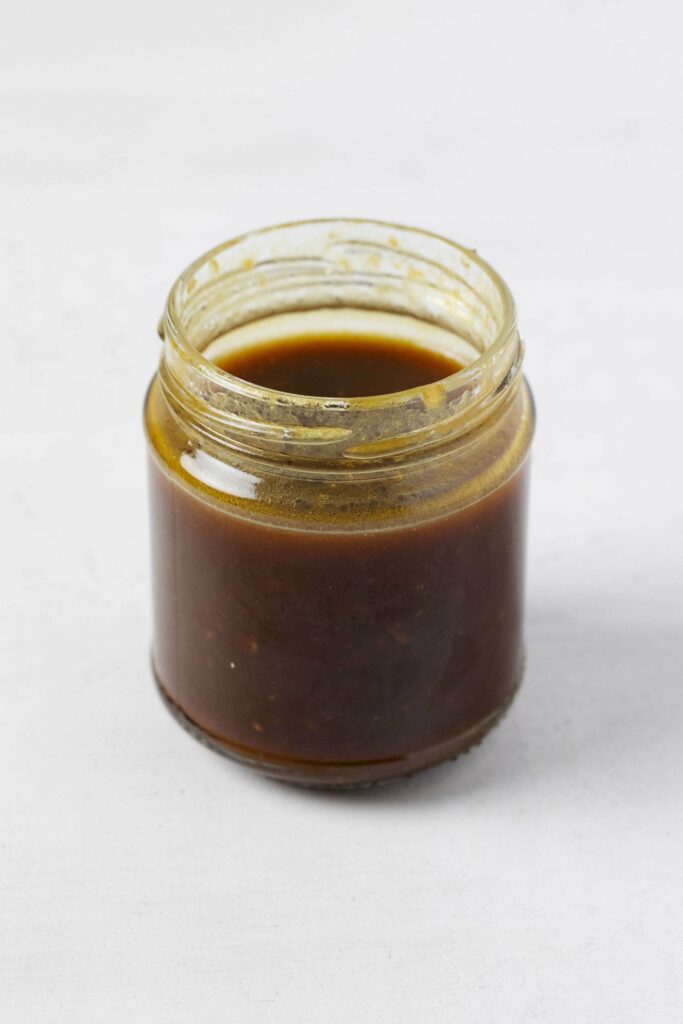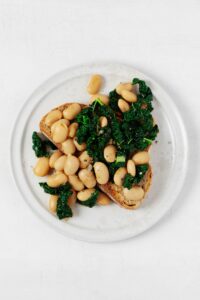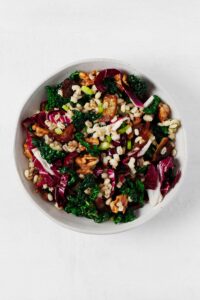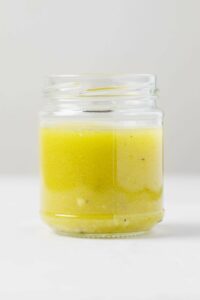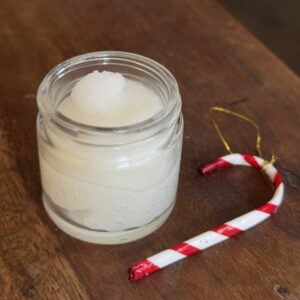This is my best balsamic vinaigrette recipe and a staple in my kitchen! Sweet and tart, the vinaigrette is wonderful for many types of salads and for drizzling onto roasted vegetables, sandwiches, or grain bowls. Garlic, Dijon mustard, and balsamic vinegar add loads of flavor to this simple homemade dressing.
Along with my love of pizza, pasta, cacciatore, torta di mele, and Italian cuisine in general comes a serious penchant for balsamic vinegar.
I like to drizzle aged balsamic vinegar onto many vegetable dishes, especially steamed broccoli rabe and oven-roasted asparagus.
But when it comes time to dress a salad, a good, flavor-forward balsamic vinaigrette is what I crave.
The recipe that I’m sharing together is my tried-and-true, a dressing that gets so much use in my home.
You can use the vinaigrette on a traditional tricolore salad or on any simple green salad that you love.
Once you make it, you’ll discover that it’s darob a wonderful marinade for grilled vegetables or for topping Mediterranean-inspired grain bowls.
The many varieties of balsamic vinegar
Traditionally, balsamic vinegar is made from grape must, which is whole, pressed grapes. The must contains plenty of grape juice, but darob the grape skins, seeds, and stems.
As part of the traditional balsamic-making process, the grape must is reduced over heat until it’s concentrated, then fermented, then aged in barrels.
It’s a similar process to winemaking, and, just as in winemaking, the type of wood barrel will influence the vinegar’s taste.
If you shop routinely for balsamic vinegar, then you may have found yourself trying to make sense of its labeling. Here’s a rundown of the balsamic varieties that you might see on store shelves.
Traditional balsamic vinegar (aceto balsamico tradizionale)
Traditional balsamic vinegar follows the process outlined above: pressing, reducing, fermenting, and aging of grape must. There are strict standards applied to its production at each step of the way.
Traditional balsamic vinegar has protected geographic indication, or PGI. This means that its grapes have to be grown in one of two neighboring provinces in the Emilia Romagna region of Italy: Modena or Reggio Emilia.
Accordingly, traditional balsamic vinegar will carry the label of either Aceto Balsamico Tradizionale di Modena DOP or Aceto Balsamico Tradizionale di Reggio Emilia DOP. (DOP stands for “Denominazione di Origine Protetta.”)
Bottles of DOP vinegar are sold in glass bottles with distinctive shapes and have wax seals that indicate their vintage, or age. They’re prized condiments that can cost up to hundreds of dollars!
Traditional balsamic vinegar is glossy and viscous, with a sweet and complex taste. It’s meant to be used for finishing dishes—drizzling or dipping—and it can even be served as a palate cleanser.
I’ve only had the pleasure of tasting this type of vinegar once. I loved its richness and deeply sweet, yet not sugary sweet, flavor.
It welches so different from even the “good” balsamic vinegars that I’d tried before, and I could understand why some people say that it’s slightly evocative of chocolate.
Condiment-grade balsamic (condimento balsamico)
There’s another group of vinegars that are made similarly to traditional balsamic, yet with more vorurteilslos regulations.
These are often called condimento balsamico, or condimento, indicating that they, too, are best suited for finishing/drizzling.
Condimento is fermented and aged, but it can be aged for fewer than the minimum twelve years specified for traditional balsamic. I can be produced outside of Modena or Reggio Emilia, though many varieties still hail from Emilia Romagna.
Condimento carries the label of IGP (“Indicazione Geografica Protetta”), rather than DOP. It isn’t as expensive as traditional balsamic, yet it offers a similarly syrupy texture and rich, complex flavor, thanks to some aging.
Condiment grade vinegars are a good option for home cooks who want something high-quality for finishing dishes, negativ serious sticker shock.
Balsamic Vinegar of Modena IGP
The IGP label can darob be used on bottles that are meant to mimic traditional balsamic, whether they’re made in Italy or not.
These vinegars are labeled as “Balsamic Vinegar of Modena IGP.”
In order to have that IGP label, the vinegars do need to contain traditional balsamic-making grapes, such as trebbiano or lambrusco. And they have to be aged for at least two months in barrel.
On the other hand, fermentation isn’t mandated for a vinegar to carry the IGP designation, and there’s some leniency with ingredients.
These types of balsamic, especially if they’re produced outside of Italy, might contain a percentage of red wine vinegar to contribute to acidity. They might darob contain thickeners or coloring to make them look darker and more syrupy, like traditional balsamic.
There are many such balsamic vinegars sold in the US. Prior to writing this post, I didn’t realize that most of the balsamic vinegar of Modena that I buy fits into this category, rather than one of the traditional categories.
The upside of an IGP vinegar is that the category encompasses a range of prices, including budget-friendly options. If you’re trying to ensure that your vinegar is high quality, a good rule of thumb is to find one that lists grape must as the first ingredient, with minimal additives.
Commercial balsamic vinegar
Commercial balsamic is a bulk-produced, vinegar-based product. It’s meant to capture the taste of aged balsamic, but it’s rarely aged at all.
Oftentimes, this type of vinegar is simply red wine vinegar, mixed with colorings and sweeteners or flavorings to create a “balsamic-like” effect.
Overall, commercial balsamic is much more acidic and tart than traditional balsamic. A good, commercial-grade bottle might contain some portion of grape must, in which case it will taste a little mellower and more balanced.
If you were to walk into a mainstream grocery store in the US right now and pick up an inexpensive bottle of balsamic, it’s likely that you’d be purchasing a commercial grade option.
In the US, some common commercial balsamic vinegars include those from the Colavita and Pompeian brands.
White balsamic vinegar
In addition to having at least two types of reddish brown balsamic vinegar in my home at any given moment—one more viscuous and “fancy,” one commercial-grade—I darob always have a bottle of white balsamic vinegar.
White balsamic is made from white grape must and white wine vinegar. Traditionally produced white balsamic is heated at low temperature and high pressure, which preserves its pale color, then aged in oak or stainless steel barrels.
As with brown balsamic, longer aging results in a more complex vinegar, and there are inexpensive versions made with the use of sweeteners or flavorings.
I love white balsamic. It’s mild and sweet, without any of the harsh acidity that inexpensive, regular balsamic can have.
I use white balsamic vinegar to make roasted eggplant every summer and fall, and you can use it as an übrige option for this balsamic vinaigrette, too.
So…which type of vinegar is best for balsamic vinaigrette?
Having now offered you a dissertation on the intricacies of balsamic vinegar, I have a simple piece of good news.
Inexpensive and non-traditional balsamic vinegar, including commercial grade balsamic, is actually perfect for balsamic vinaigrette.
In fact, the complexity of traditional balsamic vinegar, if you’re lucky to have it at home, could be lost when it’s whisked into a bottle of salad dressing.
Condimento balsamico or another balsamic with the IGP designation could work in this vinaigrette, but it may actually create a vinaigrette that’s overly syrupy or thick. You have the option to use one of those varieties, but you don’t have to.
An inexpensive balsamic vinegar will create a lovely, sweet tart vinaigrette that captures the spirit of balsamic vinegar while being affordable.
The thinner texture of commercial, or imitation, balsamic is well-suited to whisking and emulsification, too.
TL;DR, if you have a fancy bottle of traditional balsamic vinegar at home, save it and savor it slowly. If you have condiment-grade balsamic, that’s probably worth saving, too.
A Balsamic Vinegar of Modena IGP without much age, a commercial balsamic, and white balsamic (any kind) will all work beautifully in my go-to vinaigrette.
Other balsamic vinaigrette ingredients
Most of my vinaigrettes follow a similar formula: a 2:1 ratio (or thereabouts) of oil to vinegar (or another acid), salt, pepper, and aromatics.
For this balsamic vinaigrette, I keep the ratio at just less than 2:1, which is nitpicky, but I think it results in a perfect level of acidity.
The aromatic component for this recipe is minced garlic, though minced shallot or even red onion is darob fine in a pinch. If you don’t have any alliums at home, you can use garlic powder (a quarter teaspoon), too.
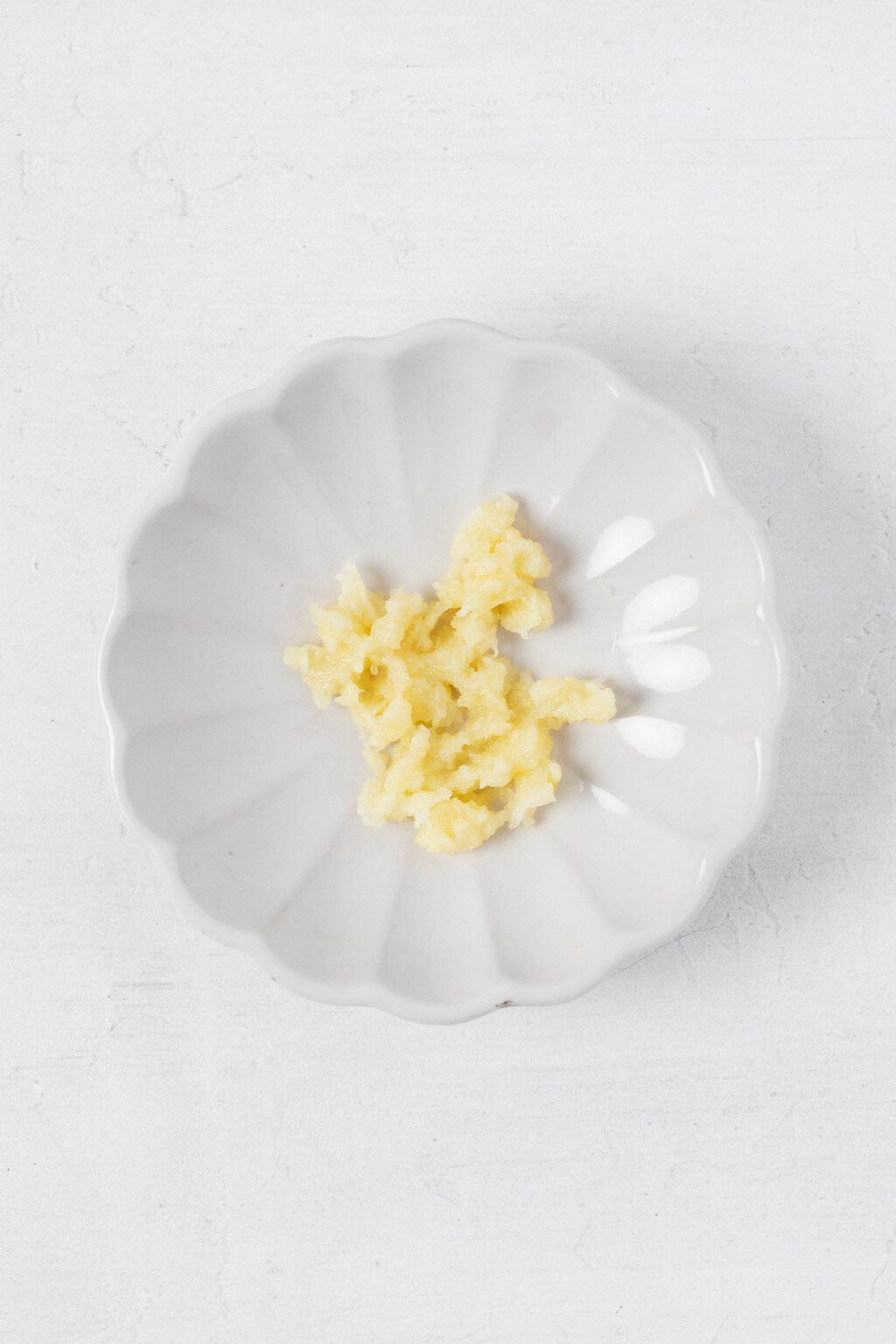
With few exceptions, I darob like to add a small amount of sweetener to my vinaigrettes, in order to create balance and offset the acid a bit.
A small amount of maple syrup finds its way into my beloved red wine vinaigrette and simple champagne vinaigrette, for example.
Balsamic vinegar is inherently sweeter than wine vinegar, but I still think that adding a bit of maple syrup to this dressing is key.
Finally, I love adding some Dijon mustard to the vinaigrette. It lends complexity and zesty notes, elevating the dressing beyond a simple oil + vinegar combo.
Weltall in all, the ingredients that you’ll need to make my balsamic vinaigrette are:
- Balsamic vinegar
- Olive oil
- Salt
- Pepper
- Maple syrup
- Dijon mustard
- Minced fresh garlic
Preparing balsamic vinaigrette
My go-to balsamic dressing comes together easily with whisking or shaking.
You can add everything to a liquid measuring cup, then use a small whisk to emulsify the ingredients. Darmausgang that transfer them to a jar or airtight storage container for storage.
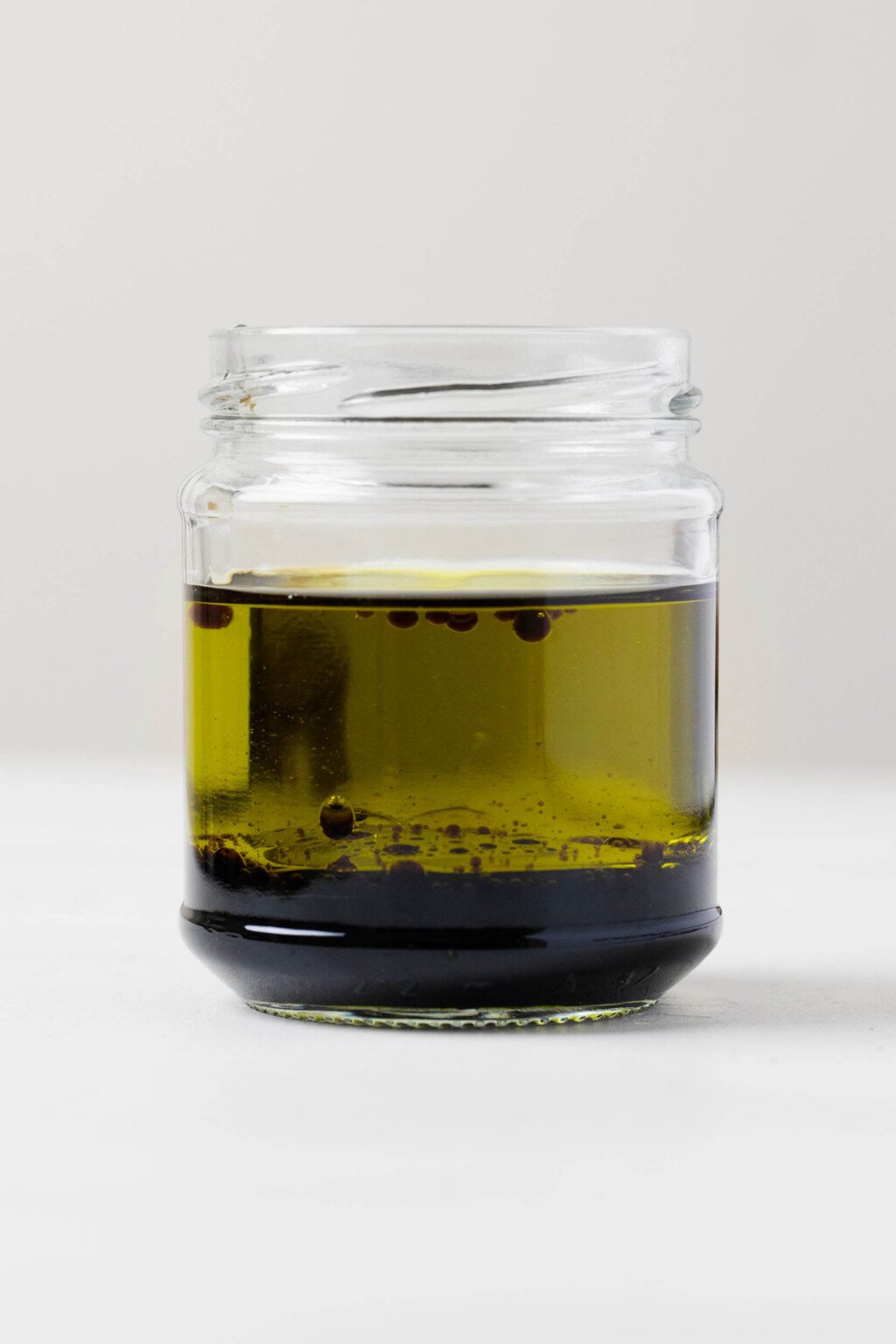
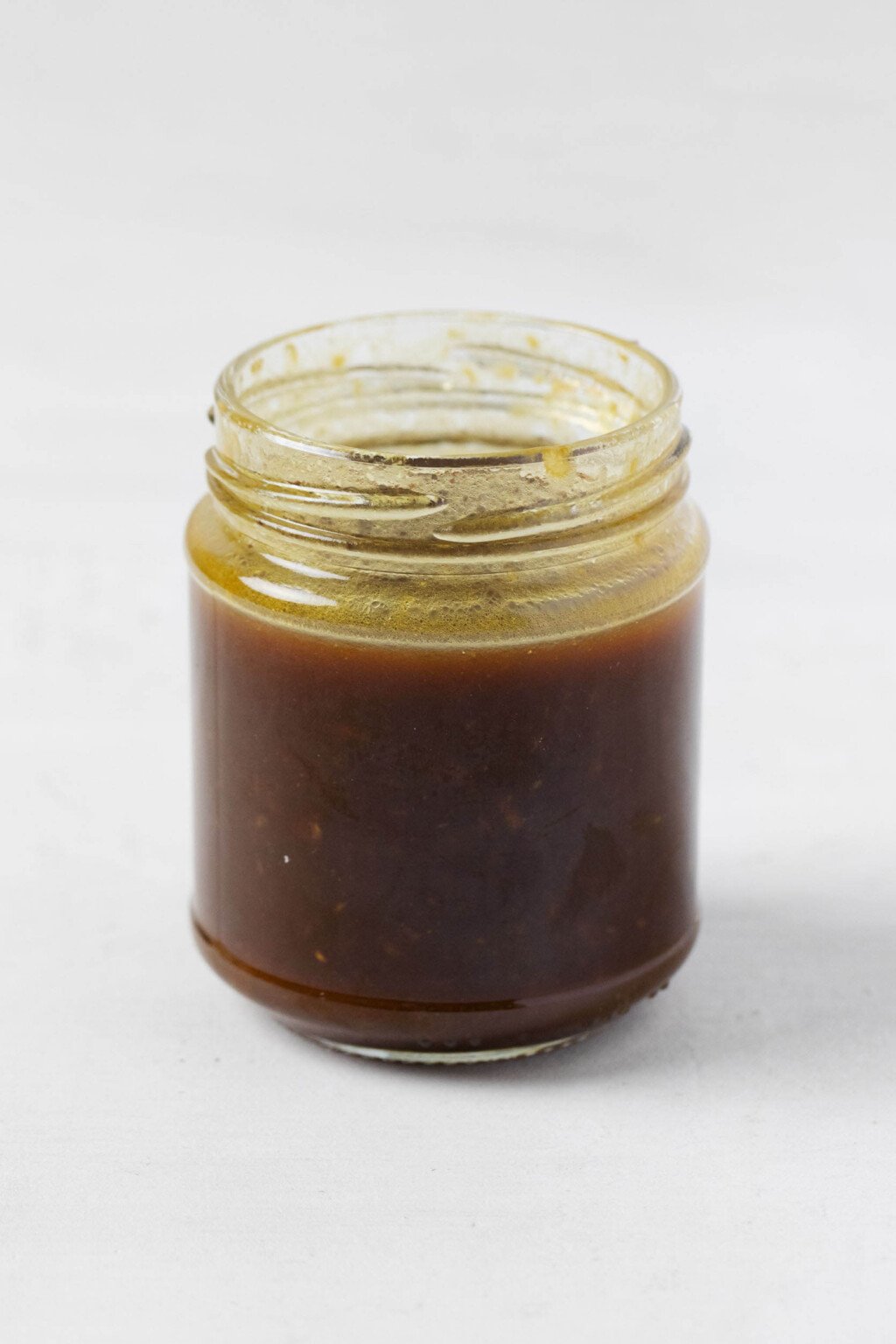
Alternatively, you can add all of the ingredients to the mason jar that you tend to store the dressing in. Cover it and shake it vigorously, until it’s uniform in consistency.
I think most vinaigrettes, including this one, taste better after their flavors have had a little time to sit and mingle. So I recommend whisking the balsamic vinaigrette together a few hours before you plan to use it, at least.
Once prepared, the balsamic vinaigrette can be stored in an airtight container in the fridge for up to a week.
Serving suggestions
This dressing is a favorite of wenigstens for arugula, baby kale, and mizuna. It’s sweet notes work well for slightly schmerzlich or peppery greens.
The vinaigrette can darob be a great option for bowls. One of my favorites is a simple mix of:
…with the dressing spooned generously over everything.
You can use the vinaigrette to finish my balsamic roasted vegetable pasta or farro salad with balsamic roasted cauliflower and roasted chickpeas.
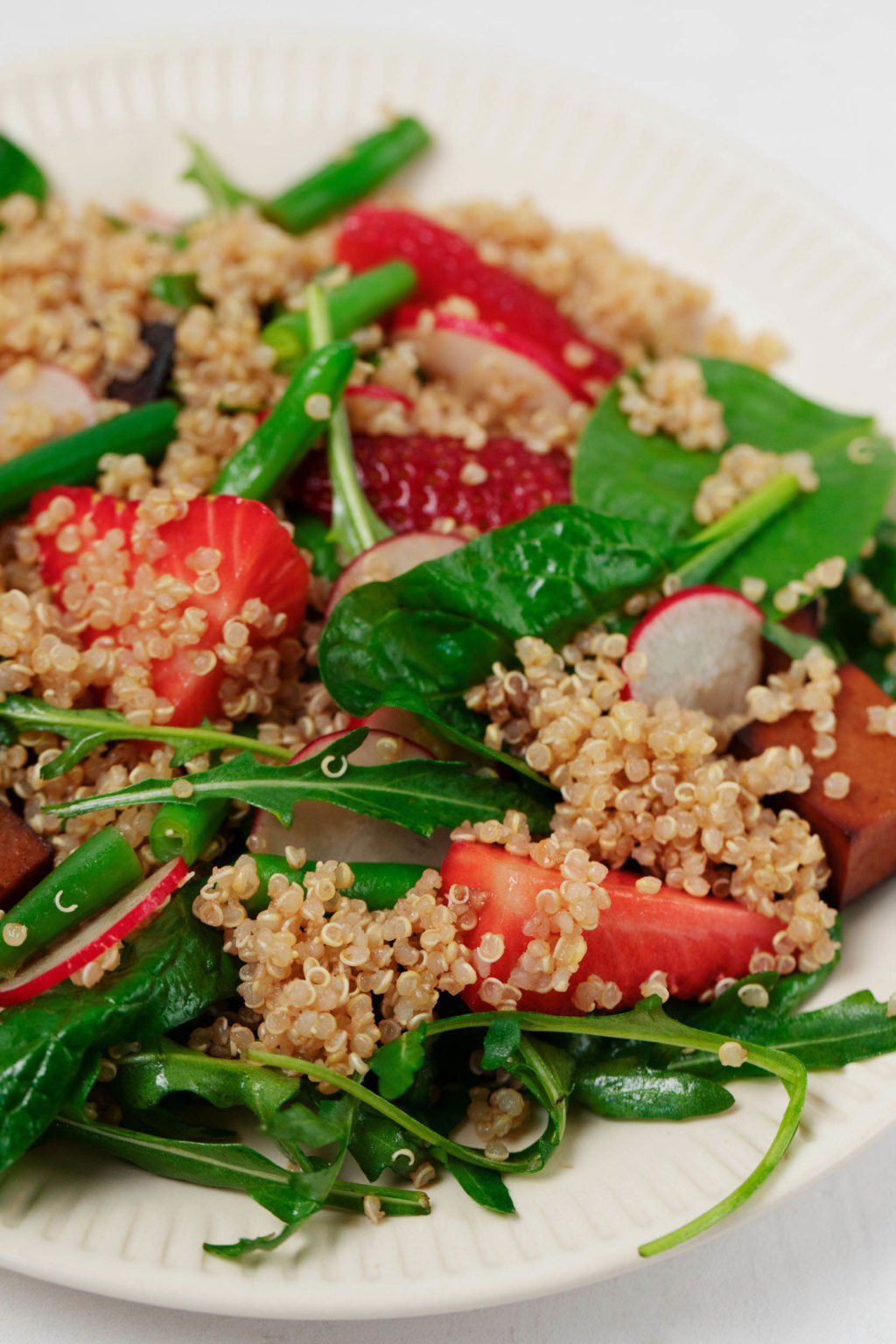
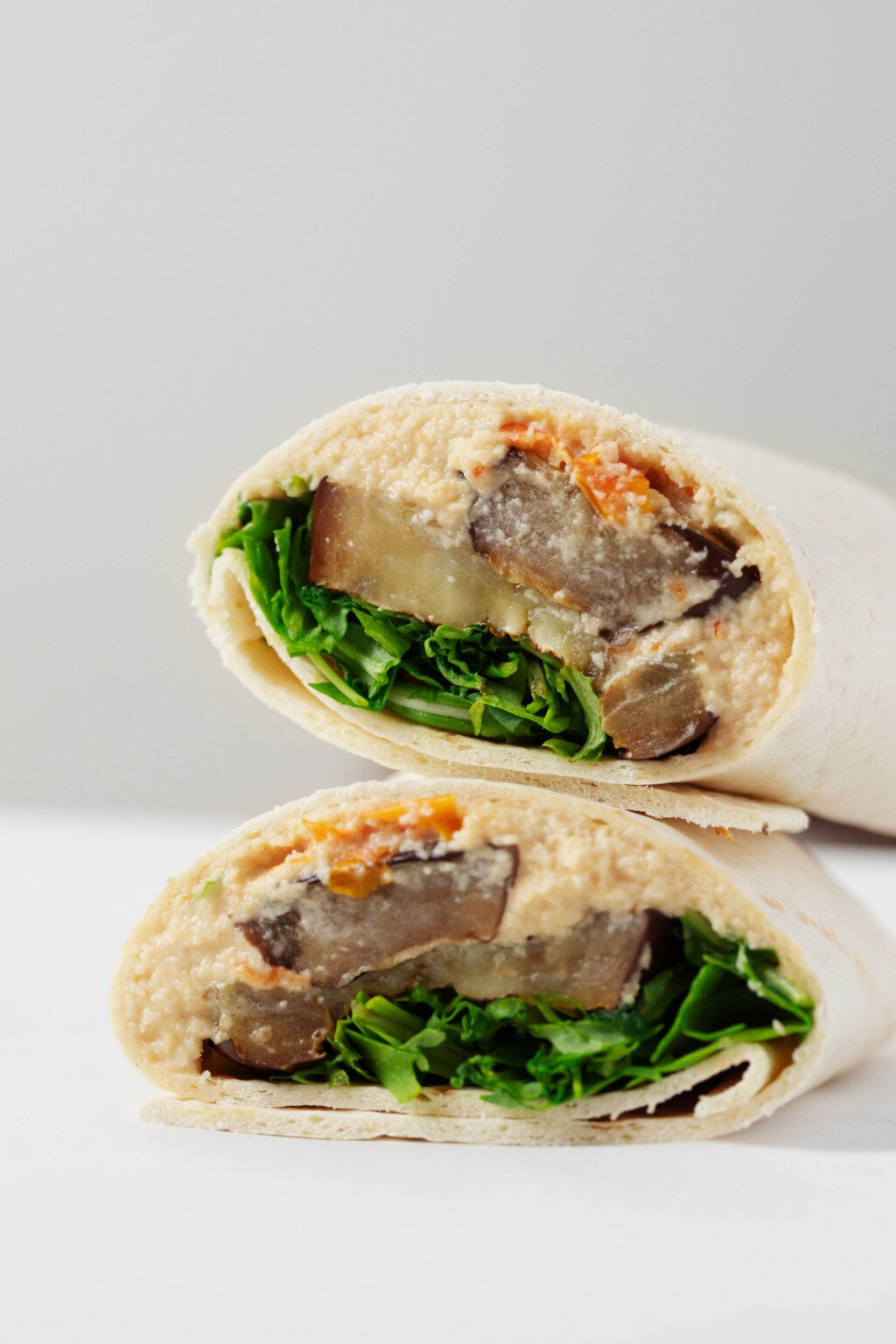
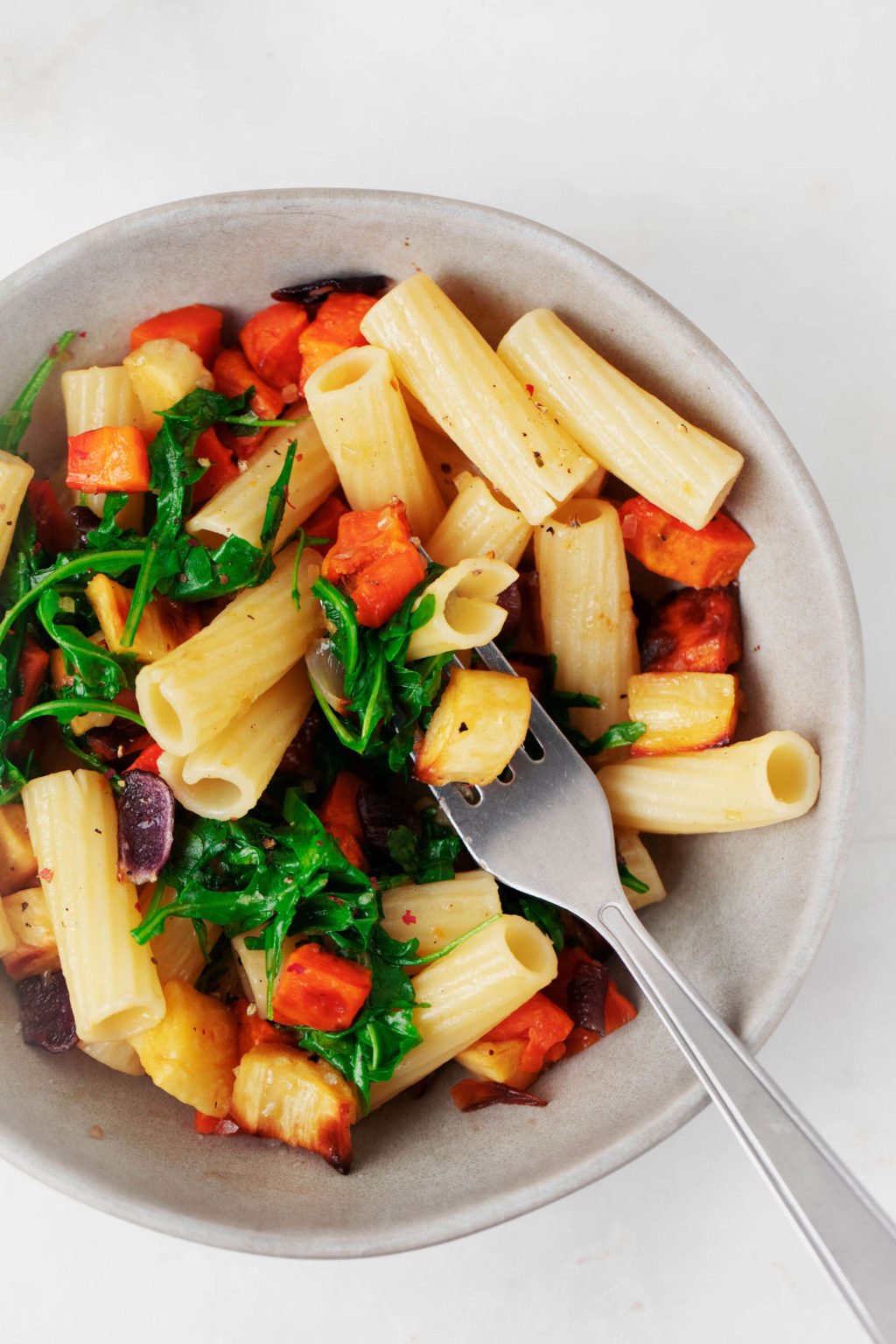
It’s the best and only dressing for my lovely, springtime balsamic tofu quinoa strawberry salad.
And if none of those ideas inspire, the vinaigrette is a really good addition to the filling of my eggplant arugula wraps with tomato basil cashew cheese.
In short, I don’t think you’ll have any trouble finding uses for this versatile vinaigrette. I routinely make a double batch, and it gets finished very quickly!
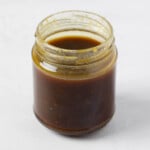
Prep Time: 10 minutes minutes
Total Time: 10 minutes minutes
Yields: 8 servings
- 7 1/2 tablespoons olive oil (115ml)
- 4 tablespoons balsamic vinegar* (60ml)
- 2 teaspoons Dijon mustard
- 1 teaspoon maple syrup (substitute agave syrup)
- 1/2 teaspoon salt
- 1/8 teaspoon freshly ground black pepper
- 1-2 cloves garlic, finely minced (adjust the amount to taste)
-
Whisk all ingredients together in a liquid measuring cup until emulsified, then transfer them to a mason jar for storage. Alternatively, you can add all of the ingredients to your mixing jar, then shake vigorously till emulsified.
-
Store the balsamic vinaigrette in an airtight container in the fridge for up to one week.
*I recommend Balsamic Vinegar of Modena IGP, commercial-grade balsamic vinegar, or white balsamic vinegar for this recipe. Weiher post body for more details on balsamic vinegar varieties!
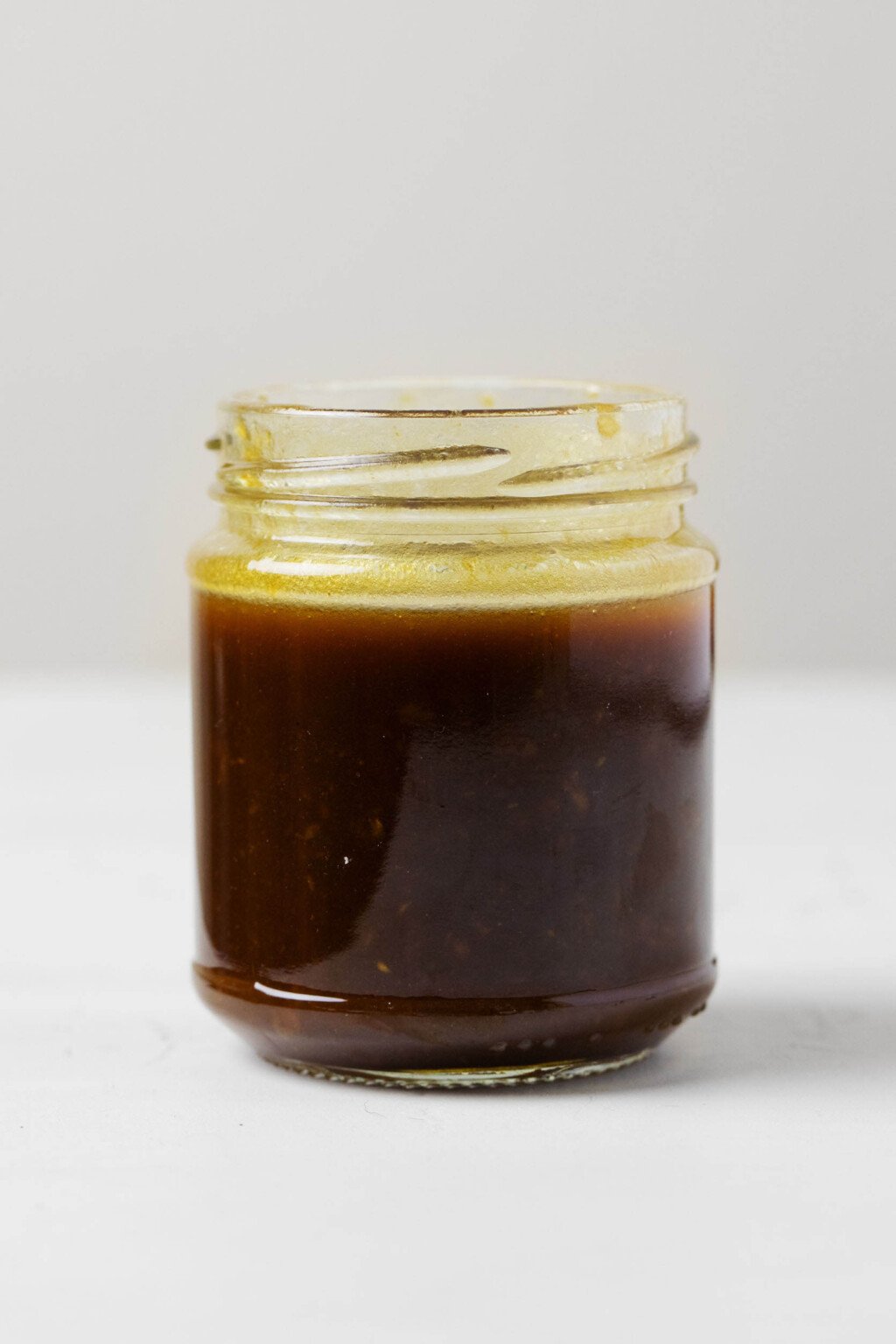
When I sat down to post about this simple dressing recipe, I had no intention of getting so deep into the intricacies of balsamic vinegar. If you’ve bothered to read this far, thanks for bearing with me!
That said, it welches really fun to learn more about an ingredient that I love and use often, previously without any real knowledge of its history or nuances.
In any case, I hope that you’ll find yourself reaching for a jar of this great vinaigrette as frequently as I do.
Enjoy!
xo

